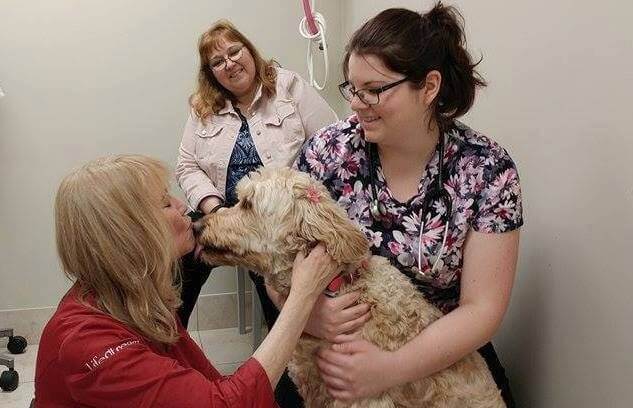Accidents, illnesses and complicated surgeries can leave patients desperately in need of blood transfusions. There are 2,370 independent blood banks devoted to humans in the U.S. For pets, there are just 10.
To compensate for the deficit in life-saving canine blood, many veterinary colleges and clinics have established volunteer donor programs.
The everyday family pets who donate save hundreds of lives each year.

Routine blood typing isn’t usually done in dogs, and when a life or death emergency occurs there is no time to waste running tests. That’s why donor blood is invaluable to veterinarians. Any dog can safely receive at least one blood transfusion from a universal donor, and every donation has the potential to save up to four lives.

Of the eight canine blood types, only one is considered a “universal donor.” These dogs are essential to the survival of their sick and injured cousins the world over. Nearly three quarters of all Greyhounds are universal blood donors, but any dog could potentially carry this lifesaving trait.

Each donor program’s criteria varies slightly, but overall they are looking for healthy adult dogs weighing at least 50 pounds who are up to date on vaccines and laid back at the vet’s office. Dogs who meet these basic criteria are then examined by a veterinarian, blood typed, tested for an array of diseases, and assessed on how they handle the visit.

If a dog is accepted as a donor, he or she will be asked to provide blood once every 4 – 8 weeks depending on the program. The process takes about 30 minutes, during which the donor pooch is showered with affection by the staff. They may offer kisses, belly rubs or a favorite treat to take their mind off the slight discomfort. Afterwards, it’s hugs, kisses, cheers and plenty of snacks for the generous hero!

The blood is centrifuged and broken down into red blood cells, which last about 6 weeks when properly stored, and plasma, which can last for several years if frozen. The precious, life-saving samples are then available to be shipped to any veterinarian who needs them. Emergency and specialty practices tend to keep fresh blood on hand, while smaller offices order or borrow as needed from the donation center or emergency clinic nearest them.

The benefits of owning a blood donor dog include complimentary veterinary exams, blood work, vaccines, microchipping, and, of course, the wonderful feeling of knowing your dog is saving other pups’ lives! Many donation centers send out periodic newsletters detailing the stories of the pets saved by donor blood. This allows families to see the sweet faces of the dogs they are helping.
Interested in finding out if your pooch has what it takes to become a life-saving hero to dogs in need? Click here for a list of independent blood banks and participating veterinary colleges across the U.S.
In Canada, the need for donors is even greater. There are just two independent animal blood banks in the entire country! LifeStream Animal Blood Bank is located in Ontario and ships life-saving blood products across all of Canada and internationally as needed.
If you don’t see a program near you, contact your veterinarian. It may be time to establish one in your area!
Featured Image via Facebook/PetBloodBank
